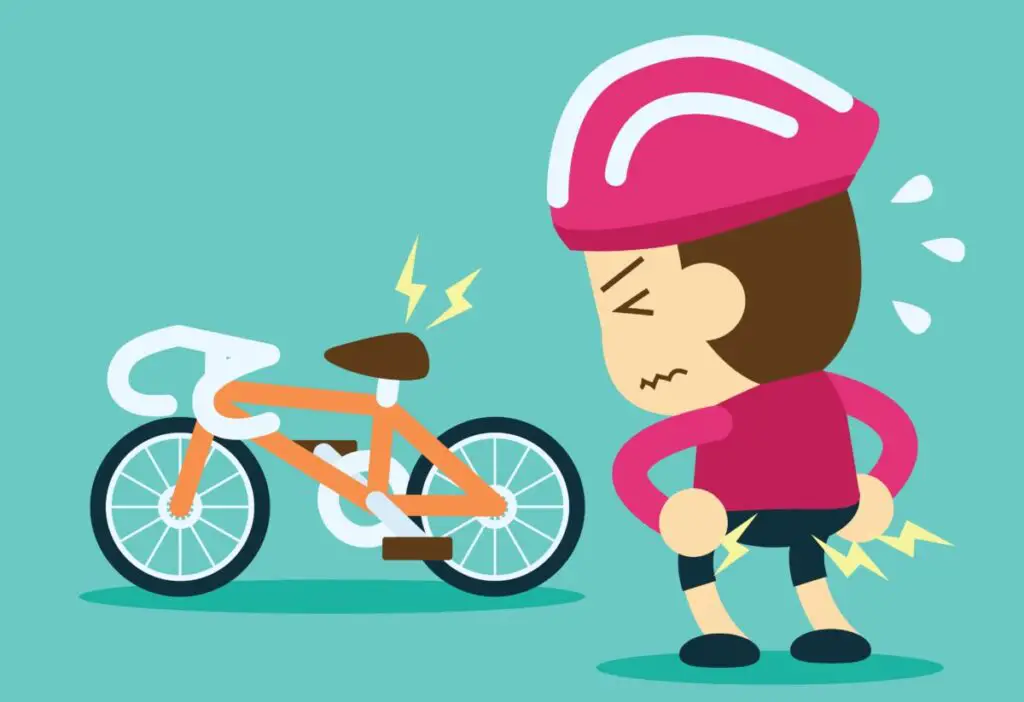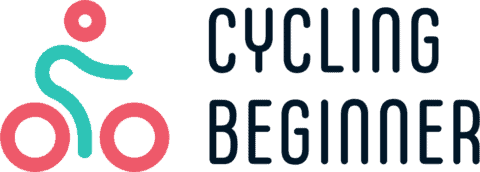I still remember the days before my first bike ride. I just bought a road bike on a secondary market and the basic cycling gear. I was ready to go when the question popped into my head. Where should I even go and more importantly, how far should I go?
When talking to beginner cyclists, I learned they all got the same question. How far should I ride so I don’t bonk (lose all the energy) but still have a real cycling experience? I always told them what I’m about to tell you.
The recommended distance for beginner road cyclists is 12 miles (20 km). An average beginner cyclist should cover this distance in about an hour, as riding at 12 mph is relatively easy on a road bike. It’s recommended to extend the distance by 10% per week.
The first miles on a road bike can be overwhelming, so it’s important to have a plan for your first rides. Below, I’ll explain what to pay attention to and how to extend your bike trips over time.
How far should a beginner cyclist ride?
My first ride on a road bike was 12 miles (20 km). Without overthinking and preparation, I took a lap around my local roads to test the new bike. By sheer luck, I covered what I consider the perfect distance for a first run – not too long to have any problems covering it, but long enough to get a sense of what road cycling really is.
I’m gonna be honest. I wasn’t in the best shape before my first ride, but not in the worst either. I came home from the ride in a bit under an hour and decided that 12 miles is my ultimate starting distance. Since then, every first ride of the new season is 12 miles long.
Soon I wanted to go further and spend more time on a bike. It happened naturally that I extended my distance ride by ride until I covered my first 20 miles (32 km), then 30 miles (48km), 40 miles (64 km) and so on.
The longest distance I have covered in one go is 135 miles (218 km), which took me 8 hours. However, I have done several shorter rides before in preparation for this ride.
I recommend you start easy. Take your first ride as a learning experience without obsessing about the distance or speed. Choose a small lap around your neighborhood that you think you can cover in 30 minutes to an hour.
Immediately after the first ride, you will receive feedback on how far you can go. Were 12 miles too much for you? Try 8 miles next time. Was it too easy? Extend the route to 15 miles.
| Distance | Average Time Needed | Difficulty Level |
|---|---|---|
| 0-6 mi / 0-10 km | 0h 30′ | Very Easy |
| 7-12 mi / 11-20 km | 1h 00′ | Easy |
| 13-18 mi / 21-30 km | 1h 30′ | Normal |
| 19-25 mi / 31-40 km | 2h 20′ | Hard |
| 26-31 mi / 41-50 km | 3h 15′ | Very Hard (not recommended for beginners) |
| 31+ mi / 50+ km | 4h+ | Avoid as a beginner |
Cycling is all about learning about your limits. It’s trial and error. Sure, I can give you some guidelines based on the average beginner, but everyone is different, so the starting distance is different.
Perhaps better advice than the distance of the first ride is its length. Aim to spend an hour on your bike, regardless of how far you get. You’ll learn that most of the time, you will cover about 10-14 miles in that hour.
What determines how far could a beginner cyclist ride?
Your average speed determines how much distance you will cover in an hour. The higher it is, the longer the distance will be. But a lot of factors affect the average speed, so let’s break them down.
- Fitness level. Probably the most obvious factor is your fitness level. The better it is, the further and faster you can go. But there’s a catch. Cycling activates specific muscles that are not often used in other sports. So even if you’re in good shape before your first ride, your lungs might handle the effort, but your muscles will fail. So I’ll say it again, don’t overdo the length on the first ride.
- Terrain profile. Average speed is also strongly affected by the terrain profile you are riding on. You’re the fastest on a flat surface and the slowest on the steep mountain slopes. For your first rides, pick a route that is as flat as possible. There will be time for climbs later.
- Surface type. Cyclists ride on different surfaces, from roads to gravel to mountain paths. Since we talk about road cycling, we’ll stick to the road, which is the fastest surface available. But even roads differ between themselves. Unfortunately, there are many roads with poor surfaces where the average speed is much lower than on well-preserved roads.
- Weather. Believe it or not, the weather can greatly affect the distance covered. Obviously, you’re not gonna go on a first ride when it’s pouring rain outside, but the weather can differ even on a sunny day. The wind is a cyclist’s worst enemy, so if you’re unlucky, it’s gonna blow towards you and make your ride much harder and slower.
- Gear. Cyclists spend thousands of dollars on newer, lighter, more aerodynamic gear. It plays a huge role, for sure, but as a beginner, don’t bother buying better gear just to be 1 mph faster. Use whatever equipment you have and only buy better stuff when you’re really serious about cycling.
It’s not the legs, it’s the butt
What cyclists learn sooner or later is that the part of your body that prevents you from driving further is not your legs but your buttocks.
Most people can sustain one hour of normal cycling pace. Yes, you will feel the tiredness in your legs, but they will not fail completely. If you had to, you could still ride for a few miles.
However, your butt will become the most painful part of your body. No matter how much you move on a seat in search of a better position, nothing will help. The butt hurts on first rides, you just have to accept that.

Many first-time cyclists think they have the wrong saddle and start buying a new one, but even then, the butt hurts. You must go through that and prepare your butt for a new reality. It’s similar to when you start playing guitar, and your fingertip hurts so much, but after a month or two, they harden, and the pain is gone.
So, be prepared to suffer a bit at first and do more short rides before going on a first longer one.
How to improve the ride distance?
Every person wants to grow and improve, and cyclists are no different. Obviously, you want to extend the riding distance, as doing 12 miles every time can start limiting you in destination selection.
Start extending the distance after you’ve done a few shorter rides and got accustomed to the bike. But do it carefully, step by step, as this is the only way you won’t suffer on a bike.
As a rule of thumb, it is recommended to increase the distance and time on the bike by no more than 10% per week. Initially, the distance will increase very little, but over time the increase will be more significant.
You will feel a desire to go longer when you’re ready.
It’s also important that you’re riding regularly, otherwise, the improvement is not possible. Each week do at least 2-3 shorter rides and one longer ride, which follows the 10% increase guidelines.
In practice, that means you do two 12-mile rides per week and one 14-mile ride. Next week you can do two 14 miles rides and one 16-mile ride. And so on until you reach your first century.
How to choose the route for the first ride?
In the end, I want to give you some practical guidelines for picking the route of your first ride. I know I would need them as I was completely lost when I started cycling. I had no idea where to go, what roads to choose and how big of a lap to pick.
- Route length. This is the most important factor when choosing a route. As mentioned several times in this blog, choose a route between 10 and 14 miles long.
- Terrain. Do your first five rides on flat terrain. Avoid big climbs at all costs. If you need to go over some minor climbs, adjust the route length accordingly. Do fewer miles in order to survive the climb.
- Roads. You’re going to ride on a road you share with other vehicles. Pick a route that takes you to the less populated areas where there is also less traffic. Always avoid the main road with heavy traffic, but that’s especially true on first rides.
- Destination. At every ride, choose an interesting destination as your goal that is positioned about halfway along the route. I recommend you pick a place where you can sit down, maybe drink a cup of coffee and relax. Make your rides an enjoyable experience. That way you’ll be more motivated and find it easier to go the extra mile.


